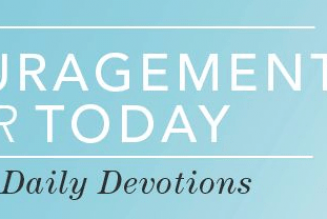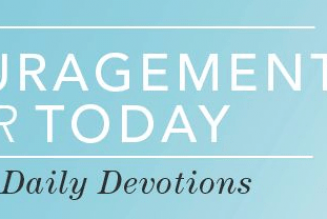
When I was tasked with reviewing Rachel Held Evans’ new book, I was admittedly nervous. A lot of heated discussion is circling around AYear of Biblical Womanhood, and I was hesitant to step into the fray. However, having now read the book, I’m excited to be part of the conversation. There’s a lot worth talking about, and yes, much to critique. Unfortunately, many are tossing aside this book for its flaws without considering the valid points it brings to an important conversation.
Evans spent twelve months following “as many of the Bible’s teachings regarding women as possible in my day-to-day life” (xxi). She created a “Biblical Woman’s Ten Commandments,” and each month dedicated herself to one of the commands. These included “submitting” to her husband by saying “Yes, Master,” to every request; mothering; having a gentle and quiet spirit; dressing modestly; devoting herself to “the duties of the home;” covering her head in prayer; and so on. Evans found herself learning how to sew her own clothes, spending a week in a tent while on her period and trying to feed a very temperamental electronic baby.
This all makes for a funny and thoughtful book. Evans’ goal was to show her readers just how hard and ultimately oppressive it would be to literally do everything the Bible teaches regarding women. “I set out… to show that no woman, no matter how devout, is actually practicing biblical womanhood all the way.” By the time I was done reading, I was inclined to agree. If biblical womanhood means sewing my own clothes and sleeping in a tent, count me out! The problem is, while this may be biblical womanhood in the sense that it covers a literal read on what the Old and New Testaments say about women, it’s not “biblical” in so far as it offers Old Testament law and scriptural narrative on the same plate as New Testament directives. This has proved to be the main issue many have with the book. Evans not only adheres to New Testament instructions (women must be gentle and quiet, must dress modestly, must cover their heads in prayer), but also Old Testament, Jewish cleanliness rituals (touching no one during her period, following kosher rules) as well as creating commands out of narrative prose (taking the 31st Proverb to literally mean women should sew their own clothes, rise before dawn, etc.).
As many have pointed out, Christians no longer practice cleanliness rituals because Jesus’ death was the final sacrifice and cleansing for our sins (John 1:29, Romans 3:27-28 Romans 6:14 Galatians 2:16-21 Acts 3:20). We also generally understand that narrative passages, like Proverbs 31:10-31, are meant to praise godly behaviors, not create a set of legalistic rules for us to follow.
So, by mixing Old Testament laws and rituals with scriptural narratives and New Testament instructions, Evans has confused people. Some have accused her of being intentionally misleading, but I don’t believe this was her intent. She wanted a compelling, funny story, so she mixed in Jewish observations of cleanliness rituals and keeping kosher, created some rules out of a proverb most understand to be an accolade to one specific woman, and didn’t make a distinction between those things and the instructions the New Testament (specifically Paul) gives women. That’s a problem for many, and Evans has admitted as much. On her blog, she responded to critical feedback, saying:
“[A]ny inconsistency in my hermeneutic is intentional and acknowledged, meant to point to the inconsistency of a patriarchal hermeneutic. (See some of my past posts on the subject to learn more, especially “Better Conversations About Biblical Womanhood Part 1 and Part 2” and “Complementarians are selective too.”)” (5 Reasons You Should Read My Book Before Forming an Opinion About It, Rachel Held Evans, http://rachelheldevans.com/blog/5-reasons-read-first).
The thing is, readers shouldn’t have to visit an author’s blog to understand the message and intent of the author’s book. Those things should be clear in the pages themselves. Evans has written a book criticizing the way the Bible is being interpreted by employing the same bad interpretation practices to prove her point. One reviewer called this “hermeneutical performance art.” I just call it confusing.
Another difficult element was Evans’ lumping together of extreme patriarchal figures with orthodox complementarian figures. Debi Pearl, author of Created to be His Help Meet, and Fred Phelps, pastor at Westboro Baptist Church (the church known for its virulence against homosexuals and picketing military funerals), are two such patriarchal voices, regularly called out by other Christians for their lack of biblical understanding. Yet Evans ties in their views to the complementarian views of John Piper, Wayne Grudem, Elizabeth Elliot, and others. It’s clear Evans finds these people cut from the same cloth, but most complementarians are quick to condemn and distinguish themselves from these fringe patriarchal views of womanhood.
Mary Kassian, who runs the website Girls Gone Wise and has headed up much of the conversation on complementary roles for women, says this about the disagreement between patriarchy and complementarianism: “Nowadays, people regard patriarchy as the oppressive rule of men. ‘Patriarchy’ is regarded as a misogynistic system in which women are put down and squelched. That’s why we rejected the term ‘patriarchalism.’ Complementarians stand against the oppression of women” (Complementarianism for Dummies, Mary Kassian, http://www.girlsgonewise.com/complementarianism-for-dummies/, July 3, 2012). By bunching such diverse viewpoints together, Evans creates a false dichotomy. She is leading readers to conclude that if you believe women have different roles than men at home and in the church, then you believe women are subservient and not equal to men.
The issue of “selective literalism” is real and both sides often play it to their advantage. So it’s troubling that many who are quick to come down on Evans’ hermeneutics seem reluctant to engage her regarding the elephant we all know is in the room: namely, why do many churches follow Paul’s instruction that 1 Corinthians 14:34, but not his instruction that 1 Corinthians 11:5-10? What does the Bible really teach about women in leadership? What does submission mean? Evans addresses these issues, but they’re eclipsed by her stories on keeping kosher and sleeping in a tent.
That said, there are a few other places Evans raises good points. She spends a considerable amount of time addressing the idea that women should only work in the home. “If God is the God of all pots and pans,” Evans postulates, “then He is also the God of all shovels and computers and paints and assembly lines and executive offices and classrooms. Peace and joy belong not to the woman who finds the right vocation, but to the woman who finds God in any vocation, who looks for the divine in every corner” (p. 30). I could not agree more; Christianity’s misunderstandings of vocation run much deeper than women’s roles at home, and I’m grateful for Evans’ discussion of this topic.
Evans also has a lot to say about social justice. The oppression of women around the world is too important to overlook. Quoting Nicholas Kristof and Sheryl WuDunn’s Half the Sky, Evans laments, “It appears that more girls have been killed in the last fifty years, precisely because they were girls, than men were killed in all the wars of the twentieth century” (235). Facts like this should rile the Church into action instead of arguments about whether or not a woman can lead a Sunday School class.
Unfortunately, the book ends on a confusing note. After spending most of her time lamenting over how we pick and choose what we follow in the Bible, Evans seems to give up and fall into the same pattern:
“It’s not a matter of whether to pick or choose, but how to pick and choose. We are all selective. We all go to the text looking for something, and we all have a tendency to find it. So the question we have to ask ourselves is this: Are we reading with the prejudices of love or are we reading with the prejudices of judgment and power, self-interest and greed?” (296)
I did not understand this statement to be a true solution to the problem of interpreting scripture. What does “prejudices of love” mean? This idea seemed vague, and Evans never really clarified.
I wanted to love A Year of Biblical Womanhood. Like Rachel Held Evans, I am a young married woman. Like her, I’m in no rush to have kids and sometimes feel that makes me less of a Christian woman (why is that?). Like her, I struggle over passages of Scripture that seem to cast women in a subordinate role, struggle over what exactly “submission” means, and struggle with the mixed messages the Church sends about what is and isn’t appropriate for a woman to do with her time and talent. Like Evans, I want to have honest dialogue about these things. But amid the many valid points and good questions in this book, I also found confusing textual interpretations and a conclusion that I wish had more clarity.
I still think you should read it, but don’t let it be the only book you read about biblical womanhood. I found myself reaching for my Bible, asking “Is that what it really says/means?” every time Rachel Held Evans challenged me.
Kelly Givens is a Contributing Editor to Crosswalk.com. She lives in Richmond, Virginia with her husband and enjoys reading, writing and spending time in the great outdoors
Publication date: November 9, 2012









